Round The World and other travels
A frequent flyer's collection of trip diaries
June 2014: Wells
Situated a little over 20 miles south of Bristol, Wells is England's smallest free-standing city. (The City of London, often referred to as the Square Mile, is smaller both by physical area and by size of the resident population, but is part of the Greater London conurbation.) Supporting a population of just 10,500, Wells has nevertheless had city status since the 13th century, no doubt thanks to its cathedral. Although the presence of a cathedral is neither a necessary condition nor a sufficient condition for city status, which in the UK is conferred by the monarch, there is little doubt that it helps.
Wells Cathedral is today the seat of the Bishop of Bath and Wells in the Church of England. Construction of the building started towards the end of the 12th century and the job took more than three hundred years to complete. Despite its relatively low-rise appearance, Wells is widely thought to be one of the most beautiful of English cathedrals. One of its best known architectural features lies inside the structure: the great 'scissors arches' under the main tower. Often wrongly assumed to be a modern addition, these arches brace the main structure and are a reference to St Andrew, to whom the building is dedicated.
Wells is also unusual for the number of surviving secular buildings linked to the cathedral, the best known being the Bishop's Palace and Vicars' Close. I visited Wells on my own as the Monday of my long weekend was a normal working day for Bruce.
Cathedral
 |
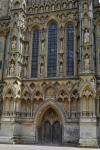 |
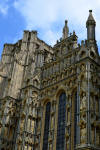 |
 |
 |
 |
 |
|||||
 |
 |
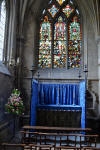 |
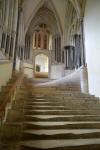 |
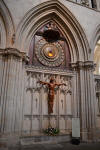 |
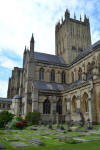 |
 |
 |
Other impressions
 |
 |
 |
 |
 |
 |
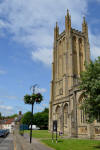 |
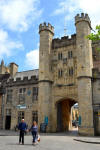 |
 |
 |
 |
 |
 |
 |
 |
Cheddar Gorge
Ancient natural forces have carved out the scenic Cheddar Gorge in Somerset's Mendip Hills. The gorge is close to the village of the same name, home of Britain's favourite cheese and less than ten miles from Wells.
Cities of SW England: Part 3
Linked reports from same trip:
1: Bristol
2: Bath



